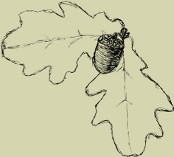42 41 40 39 38 37 36 35 34 33 32 31 30 29 28 27 26 25 24 23 22 21 20 19 18 17 16 15 14 13 12 11 10 9 8 7 6 5 4 3 2 1
Zeszyt 4 (1962)
A new accelerated test method for the determination of swelling pressure in water, in three anatomical directions, of fourteen more important wood species viz. pine, spruce, larch, Douglas fir, oak, ash, beech, birch, hornbeam, alder, maple, sycamore, lime and willow was determined with this method.
Experimental and theoretical analysis of scientific exactness of accelerated test method resulted in the following conclusions:
1. The rate of wood moistening, in the same wetting medium, does not affect the magnitude of swelling pressure, but is affecting the time of its appearance.
2. The wetting medium is affecting the magnitude of swelling of wood lump.
3. Real swelling pressure of wood lump can be determined only through application of methods which are forecasting only transient, but not permanent, strains in wood occurring as a result of swelling in observed direction, moreover those strains should not exceed 0.005 mm.
4. Accelerated method allows the determination of real swelling pressure of wood lump, in distinction from other presently used methods, which are only giving approximate evaluations. Apart from that, the accelerated method allows the determination of swelling pressure in wood without serious difficulties in measurement procedures.
Basing on results obtained in the determination of swelling pressure of various wood species in tangential, radial, and longitudinal direction it was concluded:
1. Swelling pressure of wood along the fibre, in spite of not substantial amount of swelling in that direction, is large and in some wood species attains unexpected values.
2. There is a distinct relationship between the ability of exerting selling pressure and specific gravity of wood.
3. The ability of particular wood species in exerting swelling pressure is very much differentiated.
4. Softwood species are characterized by anisotropy of swelling pressure similar to the anisotropy of swelling and shrinking wood.
5. The anisotropy of swelling pressure of hardwood species is not similar to the anisotropy of swelling and shrinking of wood.
6. For each species of wood, both softwood and hardwood, the anisotropy of swelling pressure of wood is in accordance with the anisotropy of mechanical properties of wood, provided that swelling pressure is expressed in relation to the unit of wood swelling.
Some chemical, physical, and mechanical properties of pine, oak and elm wood, derived from rampart construction built in X and XI century on the site of Ostrów Tumski, Poznań, were investigated.
Regarding chemical properties the following ones were determined: cellulose content — using Kürscher-Hofer method, lignin content — using Komarow method, pentosanes content — using Tolles method, mineral and hot water soluble substances content, and α-cellulose content in separated cellulose.
As far as physical and mechanical properties of wood are concerned, specific gravity, compression strength along the fibre, and static bending strength were determined.
Investigation results showed that the decrease in strength properties of wet excavated pine wood amounted to 1/3, while that of oak and elm wood to 2/3 of the strength properties of sound contemporary wood of the same species.
In pine wood, a relationship between the decrease of strength properties and the decrease of cellulose and α-cellulose content was found.
In oak and elm wood, along with decreasing strength properties, a decrease of pentosans content beside the decrease of α-cellulose content was observed.
No changes in specific gravity of excavated pine and oak wood, in comparison with that of sound wood of these species, were found.
Investigation results concerning the possibility of detecting in wood oil-based preservatives are presented in this work.
As a detector a iodine reagent, composed of iodine water and concentrated sulfuric acid was used. Besides, the possibility of application of UV rays in detecting oil-based preservatives in wood was investigated.
It was found that, apart from few exceptions, analytical quartz lamp can be successfully applied in practice for the purpose of detecting non-staining oil-based preservatives in treated wood.















 Pobierz PDF
Pobierz PDF